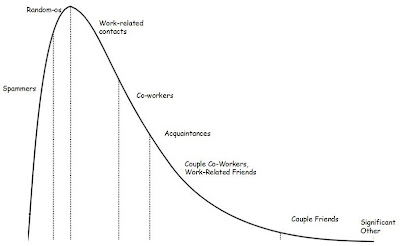Last week, I blogged about the advantages of specialty clouds over Amazon’s generic AWS. Now, I'll tell the other side of the story: why specialty clouds will need to hustle to stay competitive with Amazon.
I think Amazon’s competitive advantage breaks down into four buckets that are all work together to reinforce Amazon’s competitive advantage:
- Customer Acquisition: No matter what search queries I try, I can’t find a single keyword Amazon has bid on to promote EC2. Meanwhile, GoGrid, Rackspace, Joyent and others are forced to bid on cloud computing keywords, even on Amazon’s trademarks (e.g. check out who is bidding on “EC2”), in order to try to establish their brands. Amazon’s clear market leadership drives down their customer acquisition costs, while Amazon’s competitors must invest in online marketing to try to chip away at Amazon’s dominating market share.
- The new “You won’t get fired for hiring IBM”: While cloud computing is the hot topic on everyone’s mind, it is still perceived as risky, and there is a lot of fear, uncertainty and doubt when it comes to deploying applications in the cloud. This FUD and risk is compounded when you consider placing your bet on a private company startup that might have to shutter its doors in twelve months. Coghead’s unfortunate recent closing illustrates this risk. But Amazon is a $33B market cap, publicly listed company. It ain’t going anywhere anytime soon. This makes Amazon’s EC2 the safe bet, even if it’s not necessarily the best choice for a particular use case.
- The growing Amazon Web Service 3rd party tools ecosystem: There is a growing and vibrant list of startups emerging in the cloud computing ecosystem. Many of these aim to alleviate the management and plumbing overhead necessary to maintain an infrastructure deployed in Amazon’s EC2 cloud. These companies aren’t going to focus on integrating their technologies with other cloud computing providers for a while, much like startups that emerged in the virtualization management space haven’t focused on integrating their technologies with any hypervisor other than VMWare’s ESX. RightScale is a great example of this phenomenon. The same is true for more traditional network management companies that have historically focused on on-premise infrastructures but are now integrating with Amazon’s API to enable seamless monitoring between Amazon AMIs and captive applications hosted in internal data centers. As Amazon’s ecosystem gets richer, competitive cloud computing offerings will have a steeper wall to climb to compete.
- Amazon’s benefits from two network effects: Amazon benefits from what I’ll call an internal and an external network effect:
- Internal: Once you’ve launched one application in EC2, even if you have a Ruby on Rails website that probably would be a much better fit for Engine Yard’s specialty cloud, it’s just a lot easier to have all of your applications in one place. So Amazon benefits from a sort of network effect within a customer’s application portfolio. Until companies like RightScale integrate with other cloud computing providers, Engine Yard has a slightly higher bar to meet in order to justify the additional overhead involved in logging in to another console when a company already has all of their other applications hosted in EC2.
- External: As more and more customers move their applications and therefore their data to Amazon, other applications that use the same data source can benefit from having the data stored in S3. For example, Nasdaq now stores terabytes of Nasdaq, NYSE and Amex data in Amazon's S3, and is adding 30 to 80GB of data to S3 every workday. If I am a SF-based company that has built an application that pulls in this data, I can minimize latency by hosting my application in EC2 in the same region as Nasdaq's data. As more data piles into S3, Amazon benefits from an increasing network effect. It's worth noting that specialty clouds can benefit from the same network effect, but Amazon has the head start.




